Not just a flashlight – with the “Vanguard” Cyansky has created something very special. A creation that will not only please gun enthusiasts, but also invites you to play with it.
A flashlight that is loaded with a 9 × 19 mm round – sorry – a rechargeable battery? Sounds crazy, but that’s the concept of the Vanguard!
You can find the German version of this review on my website: SammysHP Blog › Cyansky Vanguard
The flashlight was provided by the manufacturer for this review. Thank you very much!
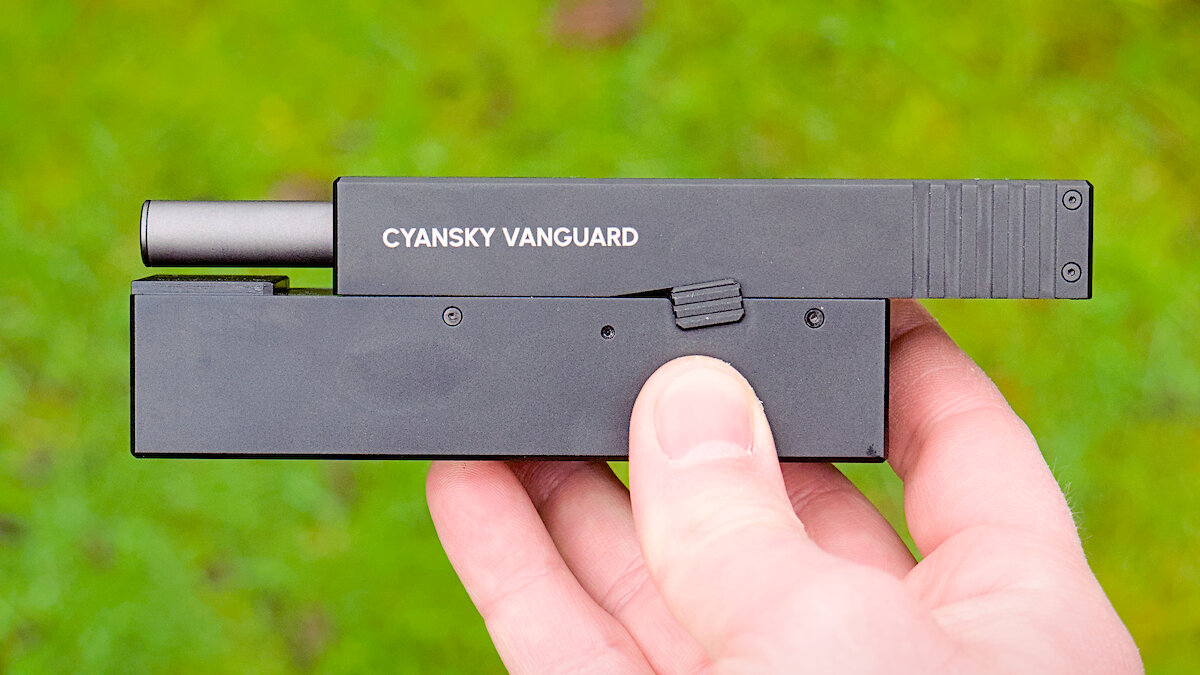
Overview of hardware
A simple cardboard box would of course be completely unsuitable for this piece of art. Thus the Vanguard comes in a small case, which also contains a few accessories:
- Cyansky “BL16085” 16280 Li-ion battery with 850 mAh (unprotected, button-top, 3.82 V at arrival)
- USB-C charging cable
- Manual (CN, EN, DE, FR, ES, IT, JP, RU)
At the time of testing, I only had the manual in PDF format, which is why it cannot be seen in the photo. It is easy to understand and even includes a simplified runtime diagram.
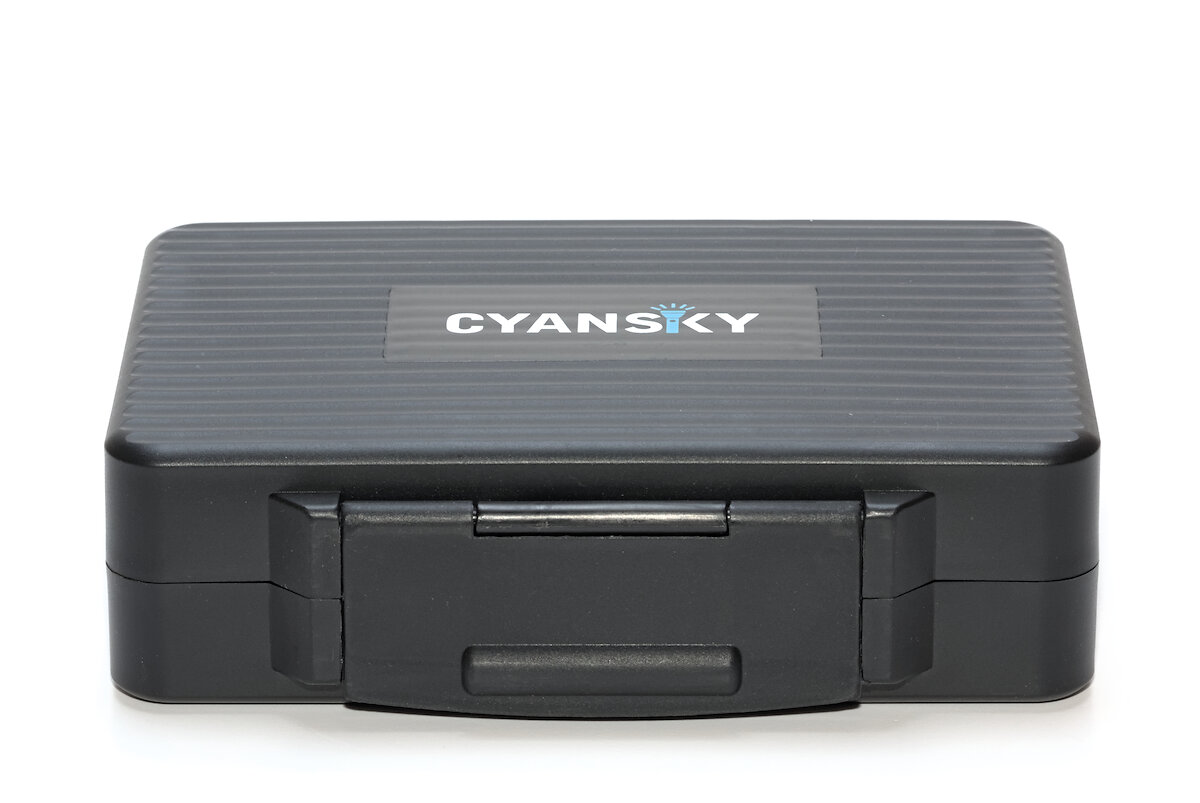
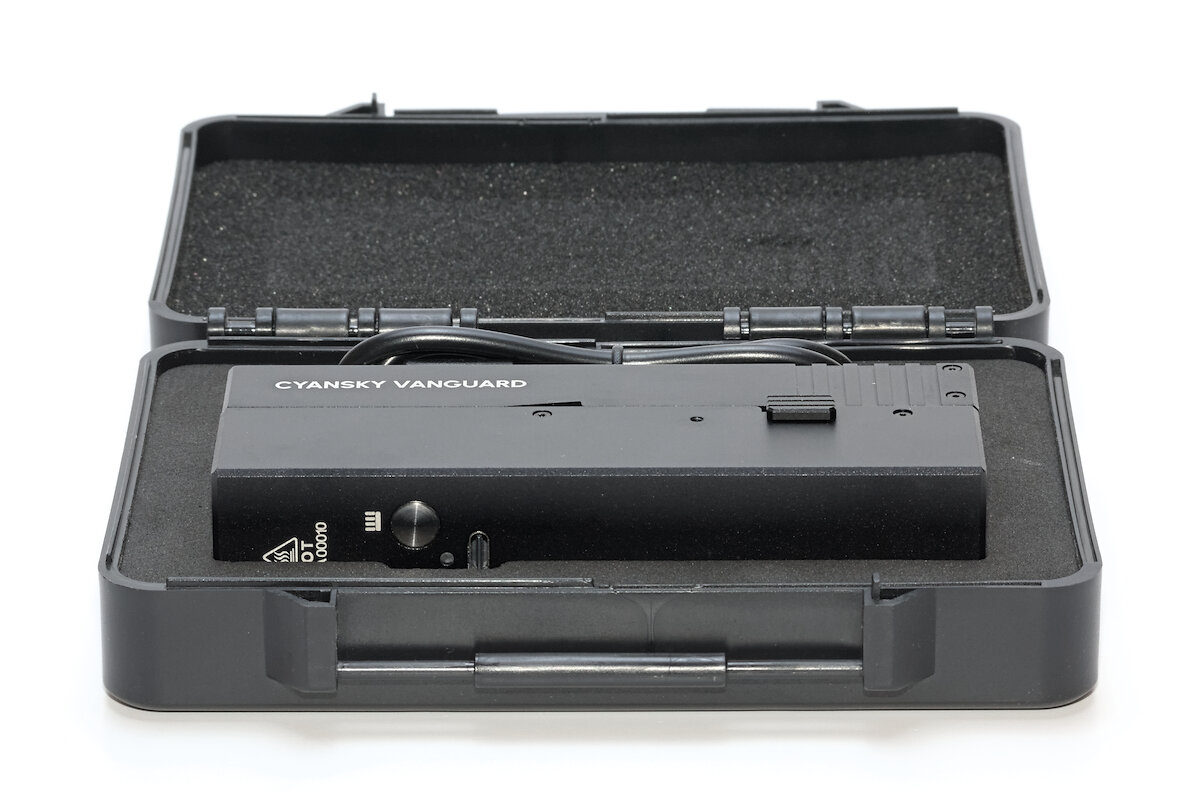
The basic shape of the flashlight consists of a rectangular body measuring 120 × 45 × 30 mm. Including the small battery, it weighs 255 g.
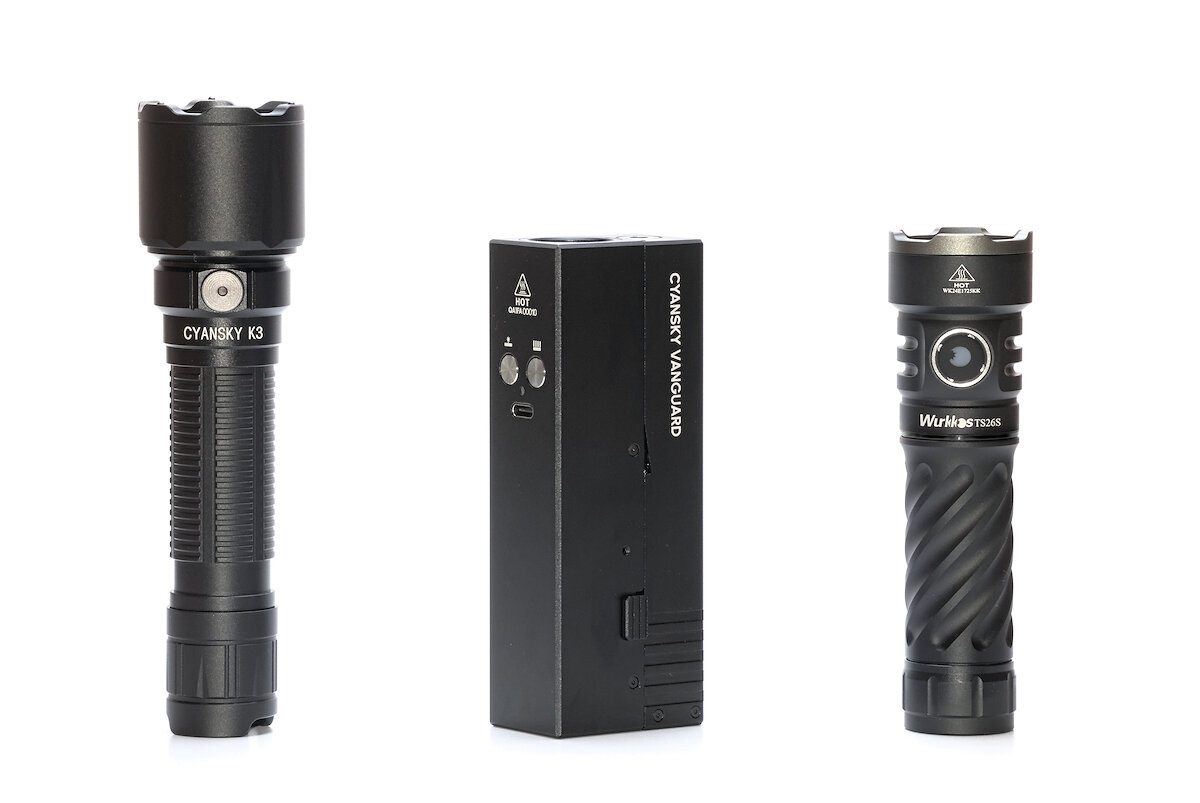
The blocky design reminds of a certain product from the world-famous manufacturer “Glock”. It should be clear which object this flashlight refers to.

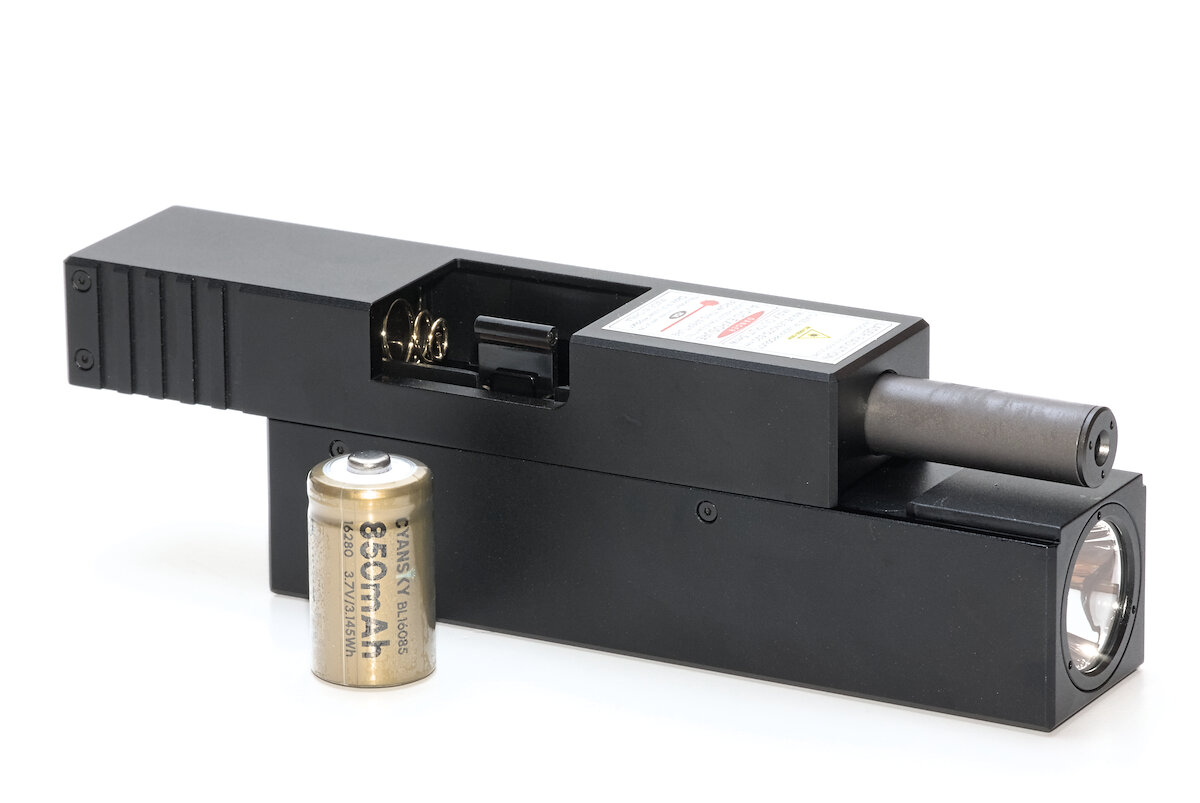
On the left side is the catch lever, which holds the slide in the rear position to allow a battery to be inserted into the chamber. [note to myself: this sounds so wrong]
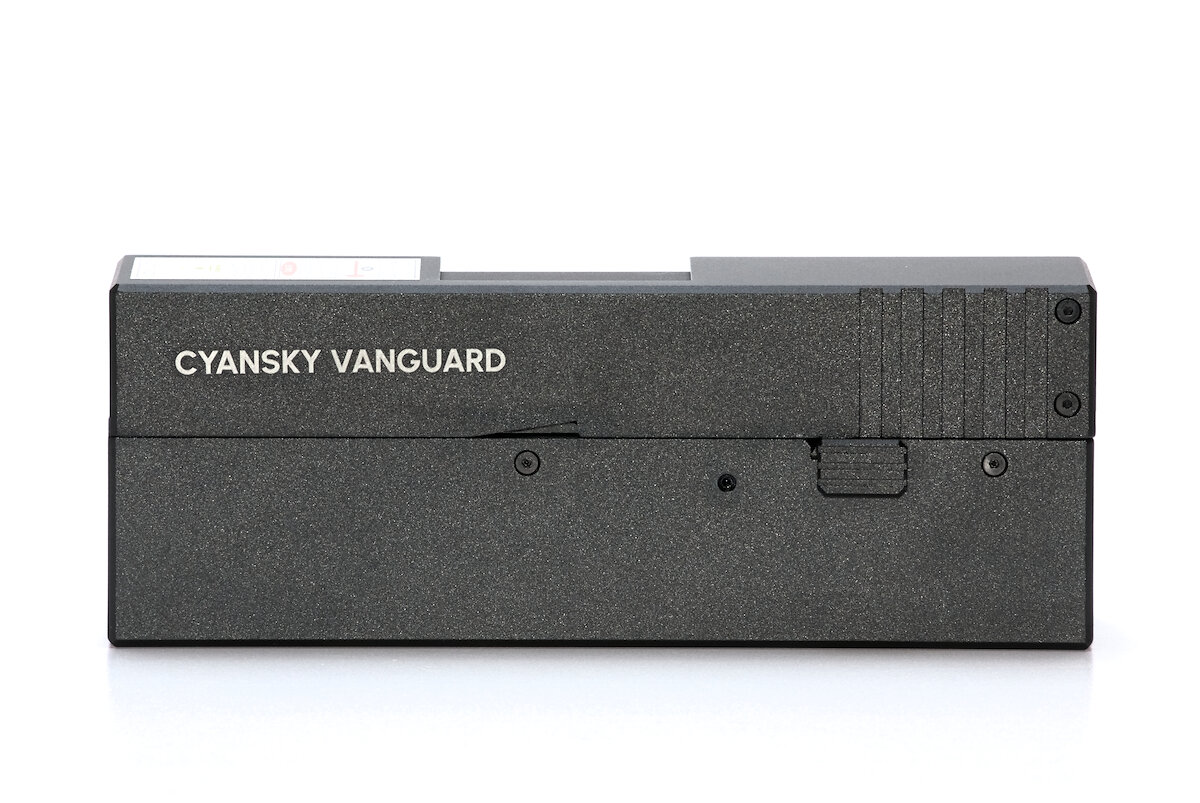
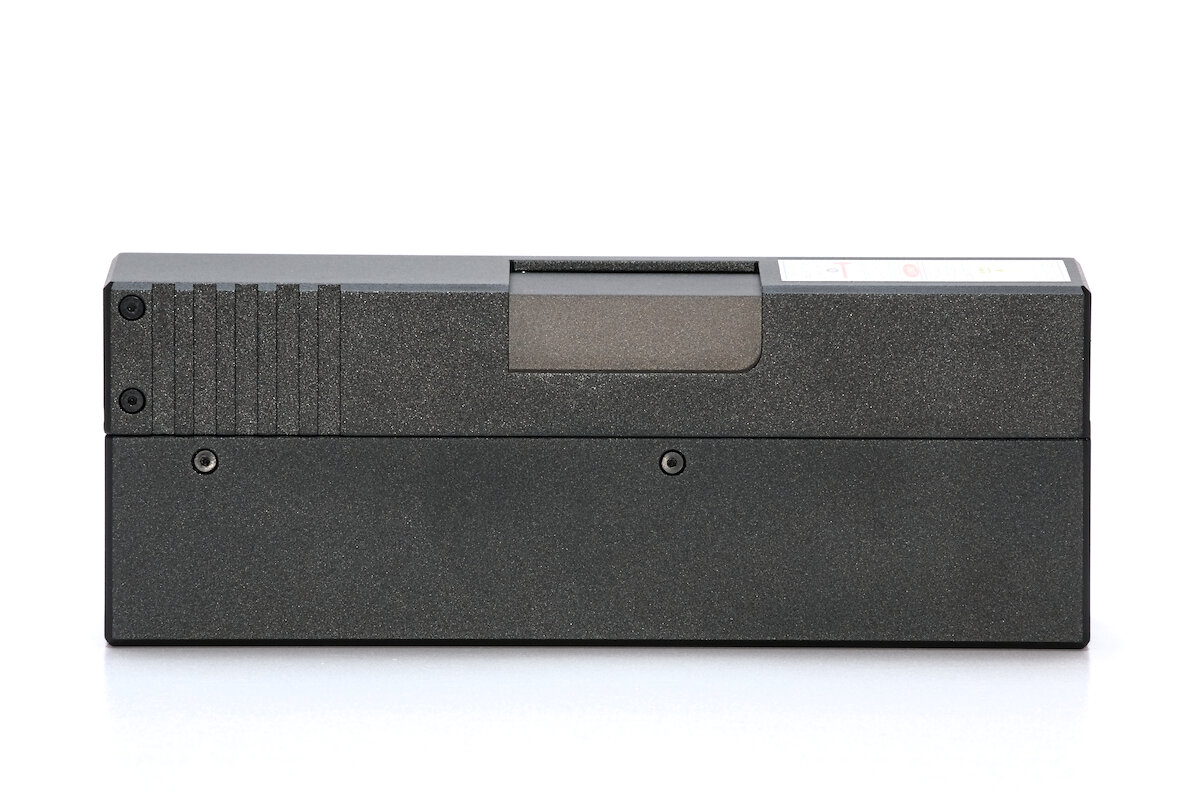
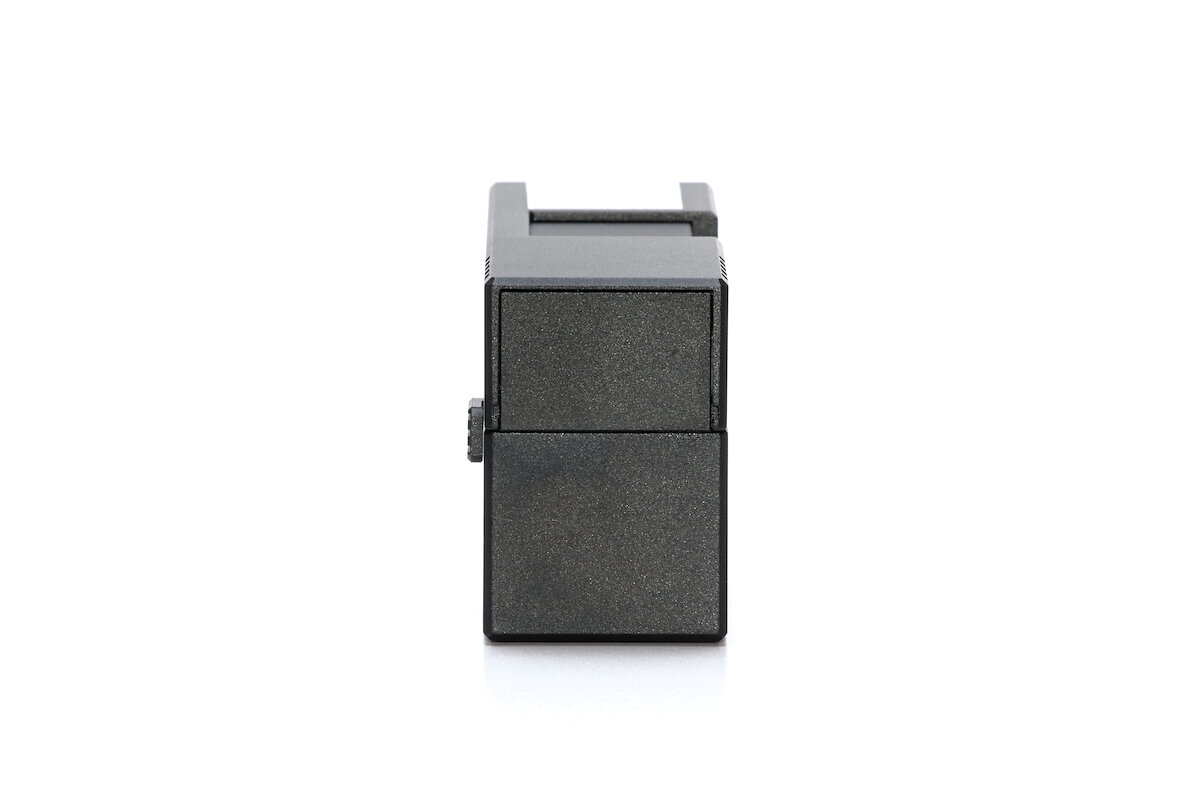
What would otherwise be the muzzle is a green laser on the Vanguard. Below it is the white LED in a large, smooth reflector.
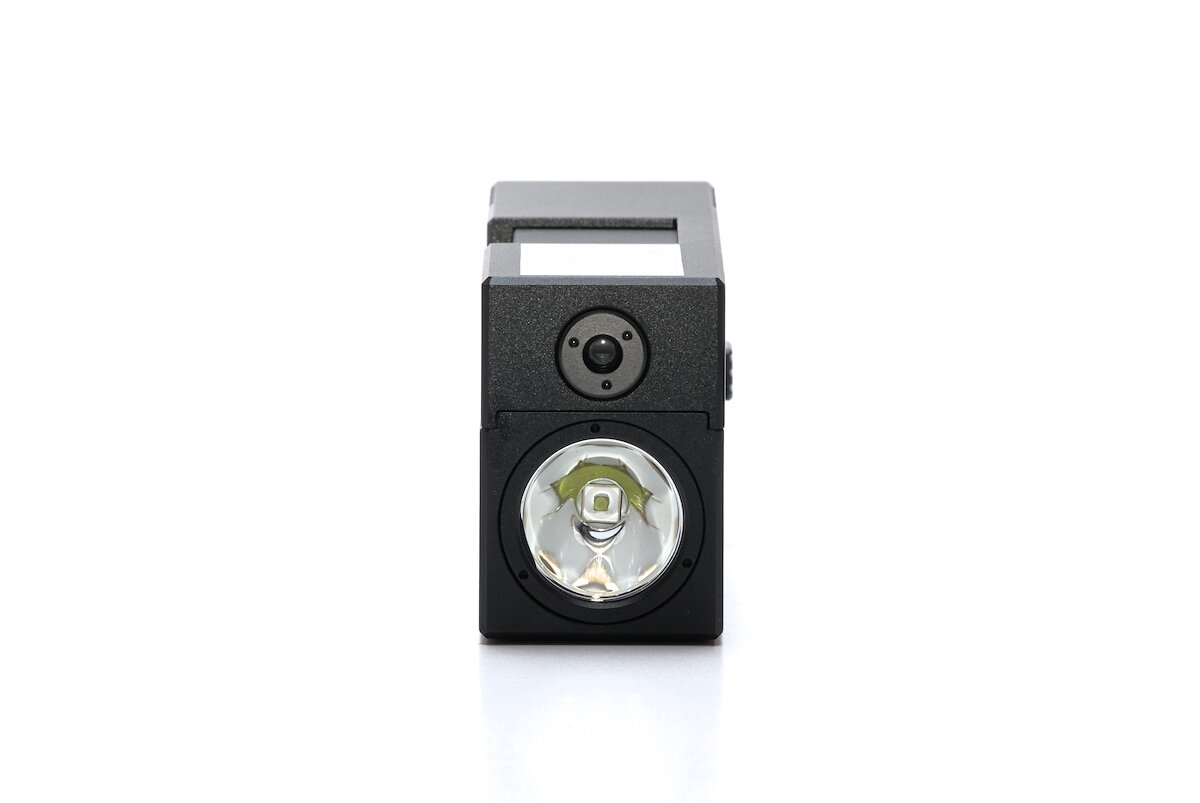
The sticker with information on the laser class on the top of the flashlight can be removed without leaving any residue.
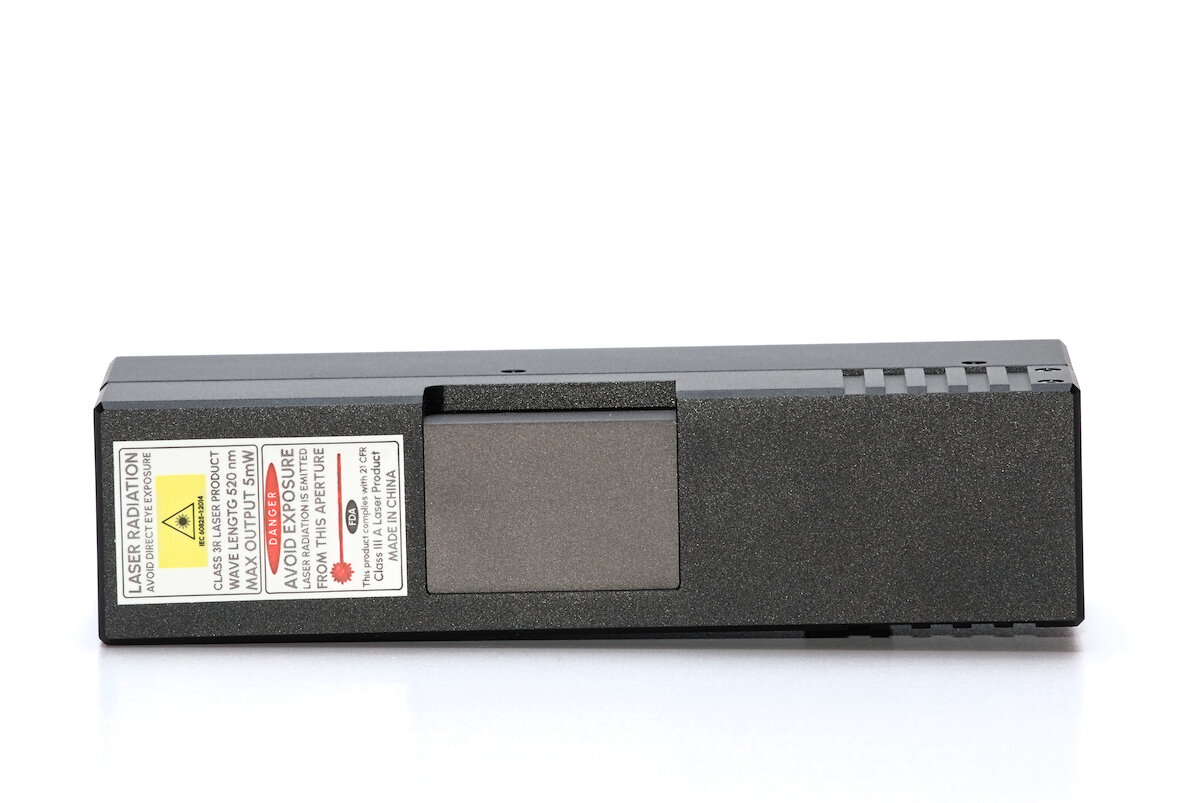
The two buttons for operating the flashlight, a status LED and a USB-C port for charging the flashlight are located on the underside.
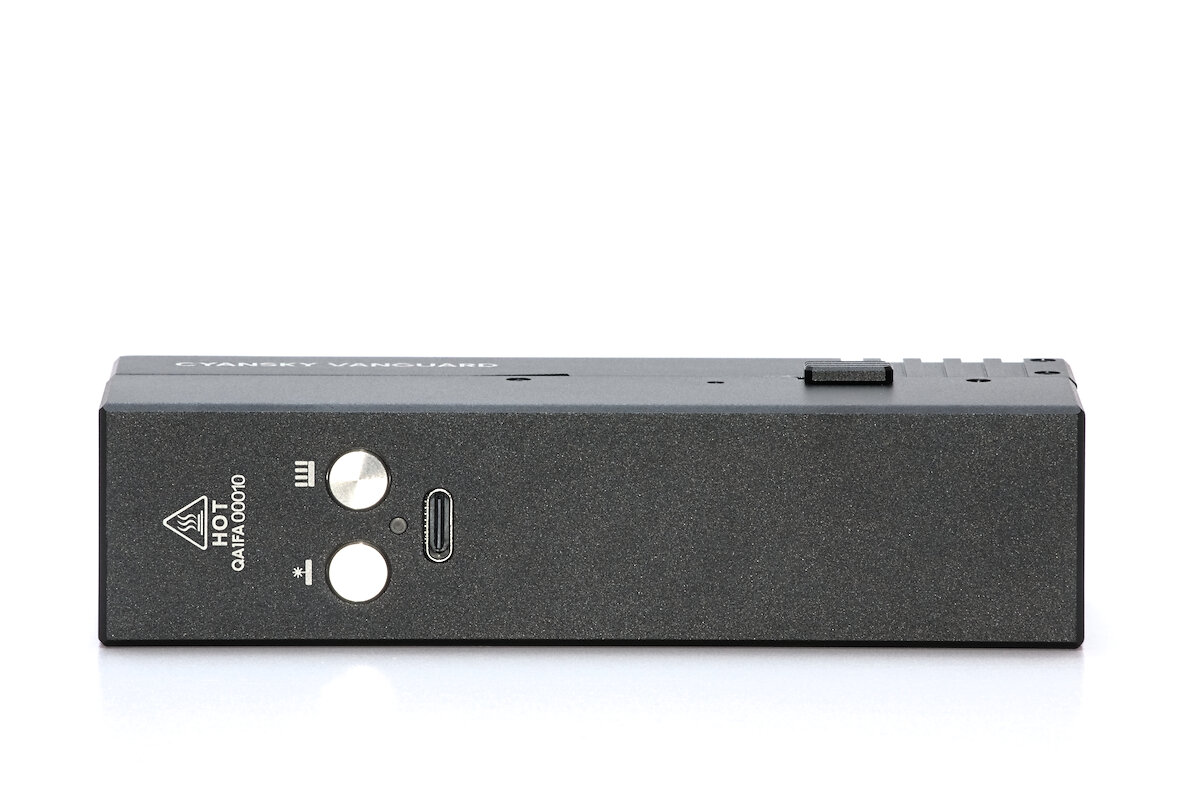
In addition to the removable, small 16280 battery, there is also a permanently installed 21700 Li-ion battery with 5000 mAh. The 16280 battery is used more for fun or as a backup.
Charging happens at up to 2.8 A, meaning that the charging process is completed after around two hours. During charging, the status LED next to the buttons lights up red, changing to green once charging is complete. The flashlight can be used without restrictions while it is connected to the charging cable.
With the right USB-C cable or OTG adapter, the Vanguard can also be used as a power bank to charge your smartphone, for example.
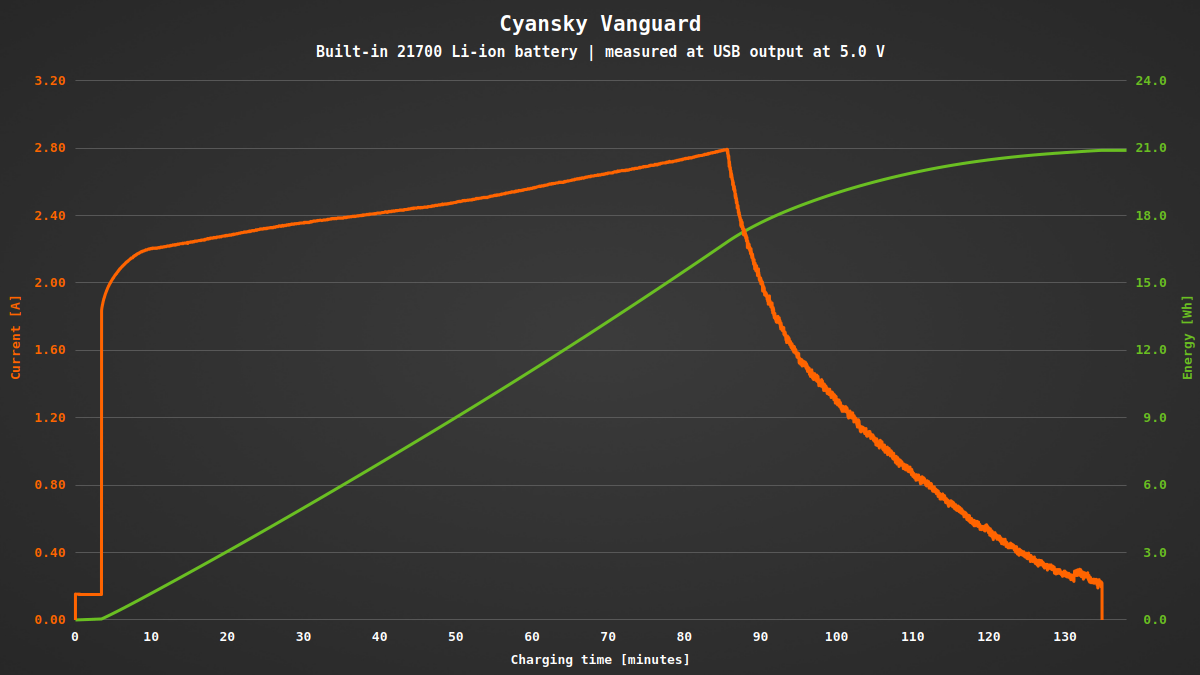
At some point, the performance of the battery will drop. As it is permanently integrated, this may also mean the end of the flashlight. It may be possible to dismantle it by removing the slide and thus gain access to the battery. However, if you look through the chamber, you can see some adhesive residue.
Here are two more views with the slide retracted. You can see the locking mechanism by the catch lever and the inserted battery.
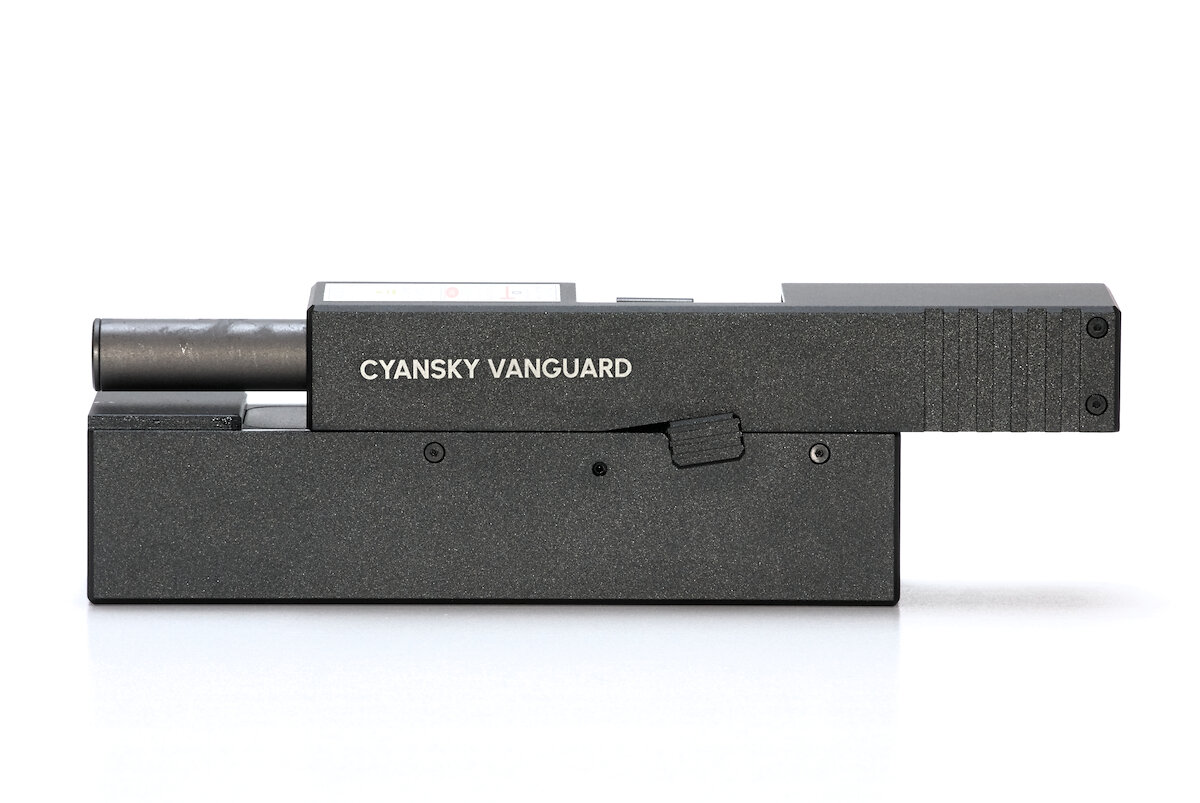
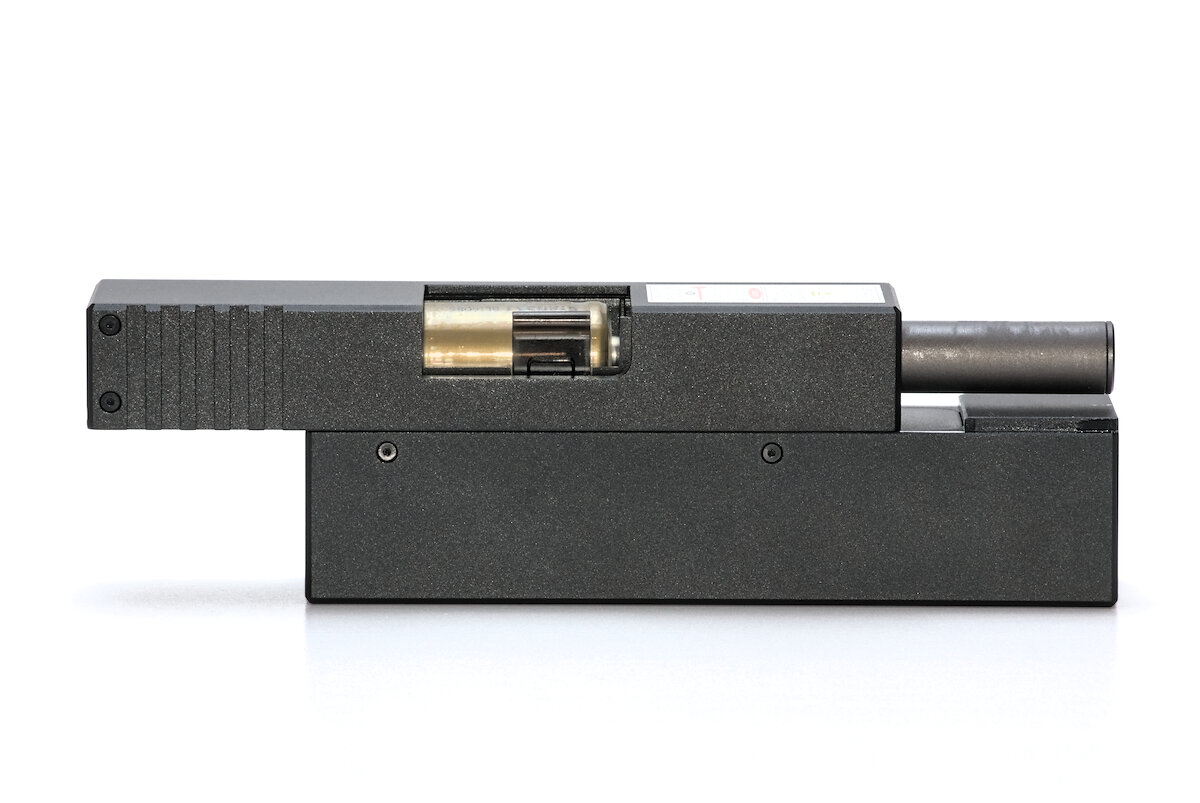
The body is matt black anodized, but it is also available in silver. According to the manual, the flashlight can withstand drops from a height of up to one meter, although this is more likely to be a theoretical value. The question about protection against water is answered with “not waterproof”. The Vanguard is more of an object for playing around with or for the display case. The build quality is excellent throughout.
User interface
To control the flashlight, there are two small buttons on the “underside” (depending on how you hold it). They are flat and flush and therefore quite difficult to feel.
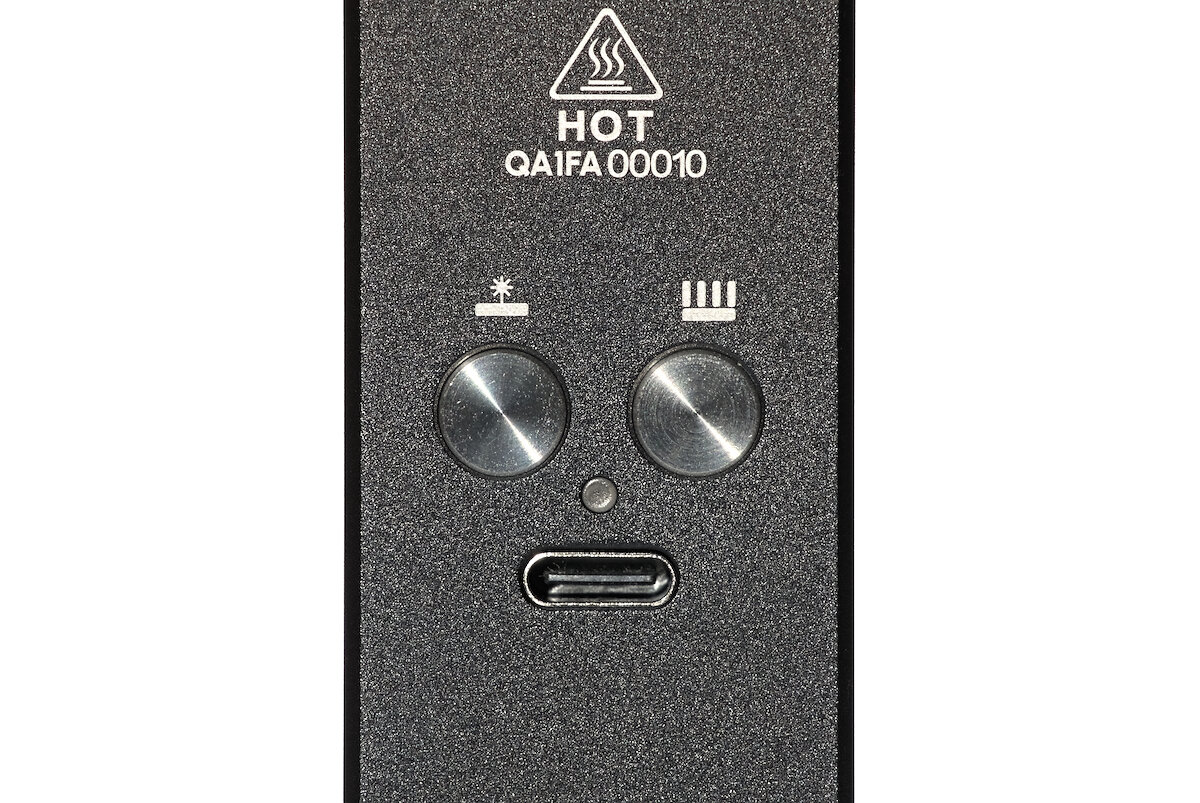
The left button controls the green laser and simply switches it on and off. The right button controls the white light and has more functions:
| State | Action | Function |
|---|---|---|
| Off | 1 click | Turn on (previous brightness, except Turbo) |
| Off | 2 click | Turbo |
| Off | 3 click | Strobe |
| Off | 4 click | Lockout |
| Off | Hold | Eco |
| On | 1 click | Turn off |
| On | 2 click | Turbo |
| On | 3 click | Strobe |
| On | Hold | Increase brightness (Low → Medium → High) |
| Turbo | 1 click | Turn off |
| Turbo | 3 click | Strobe |
| Turbo | Hold | Previous brightness |
| Strobe | 1 click | Turn off |
| Strobe | 2 click | Turbo |
| Strobe | 3 click | Switch between strobe and SOS |
| Strobe | Hold | Previous brightness |
| Lockout | 4 click | Unlock and turn on in previous brightness |
The white light and the laser can also be used simultaneously. The strobe runs at 10 Hz and 50% duty cycle at full brightness, the slow S-O-S at the brightness of “Medium”.
A status LED under the buttons indicates the approximate state of charge for five seconds after turning the light on. If the battery voltage is low, the LED flashes red continuously while the flashlight is switched on.
| Color | State of charge |
|---|---|
| Green | 75% – 100% |
| Green blinking | 50% – 75% |
| Red | 25% – 50% |
| Red blinking | < 25% |
The slide is pulled back to change the additional battery. A small eject lever helps to remove the battery.
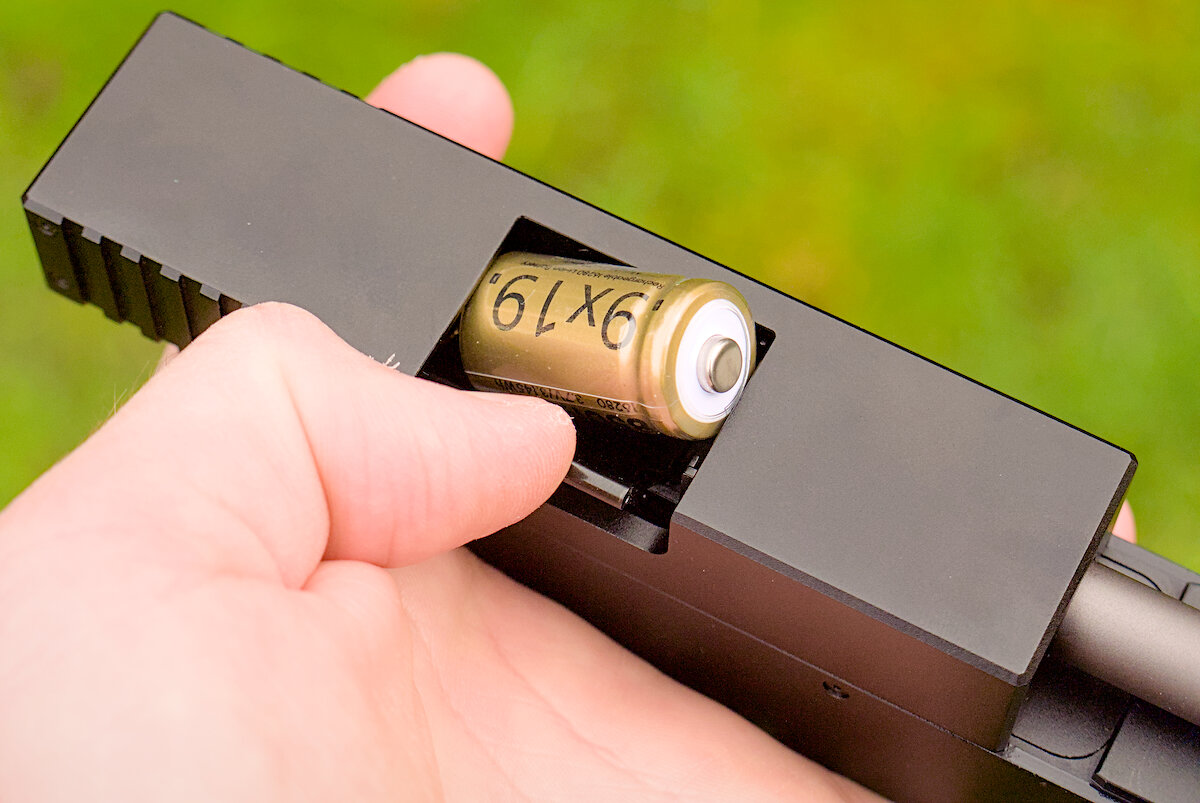
Because of its angular shape, the Vanguard is a little uncomfortable to hold. For fun, I printed a matching handle and attached it with double-sided adhesive tape. But you shouldn’t walk around with it in this configuration.
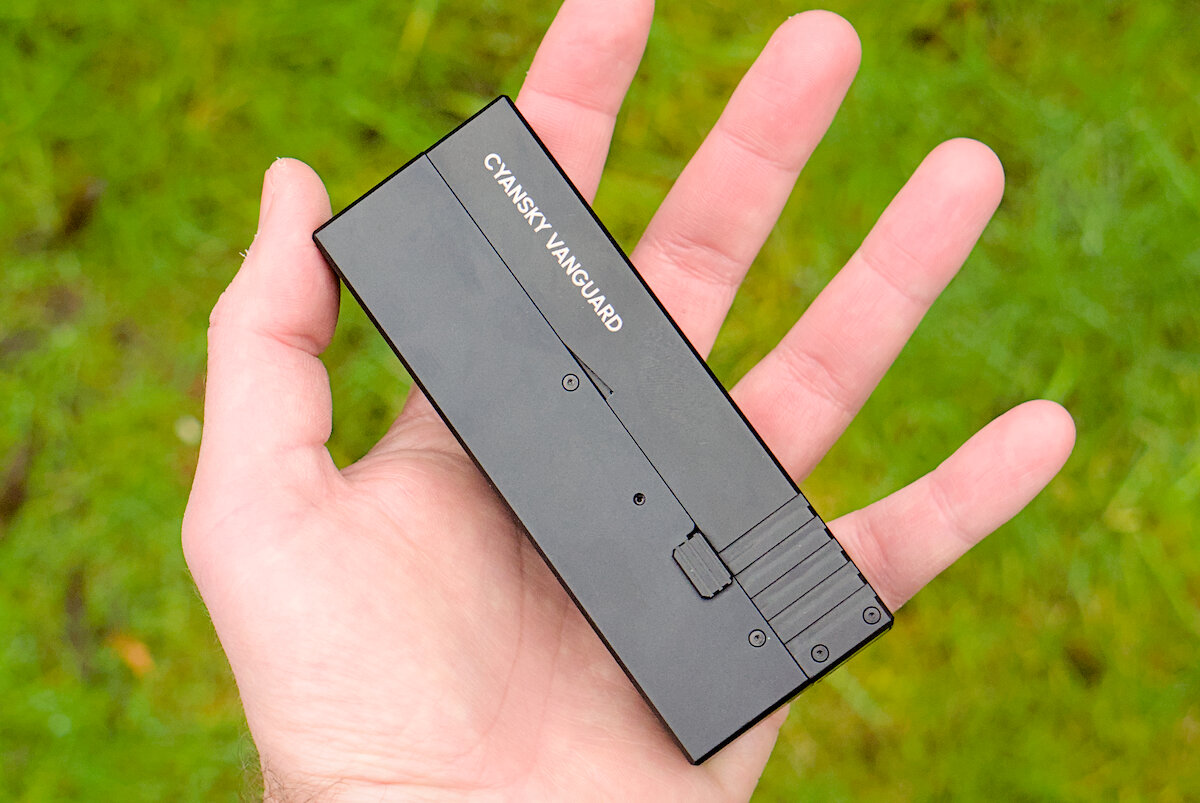
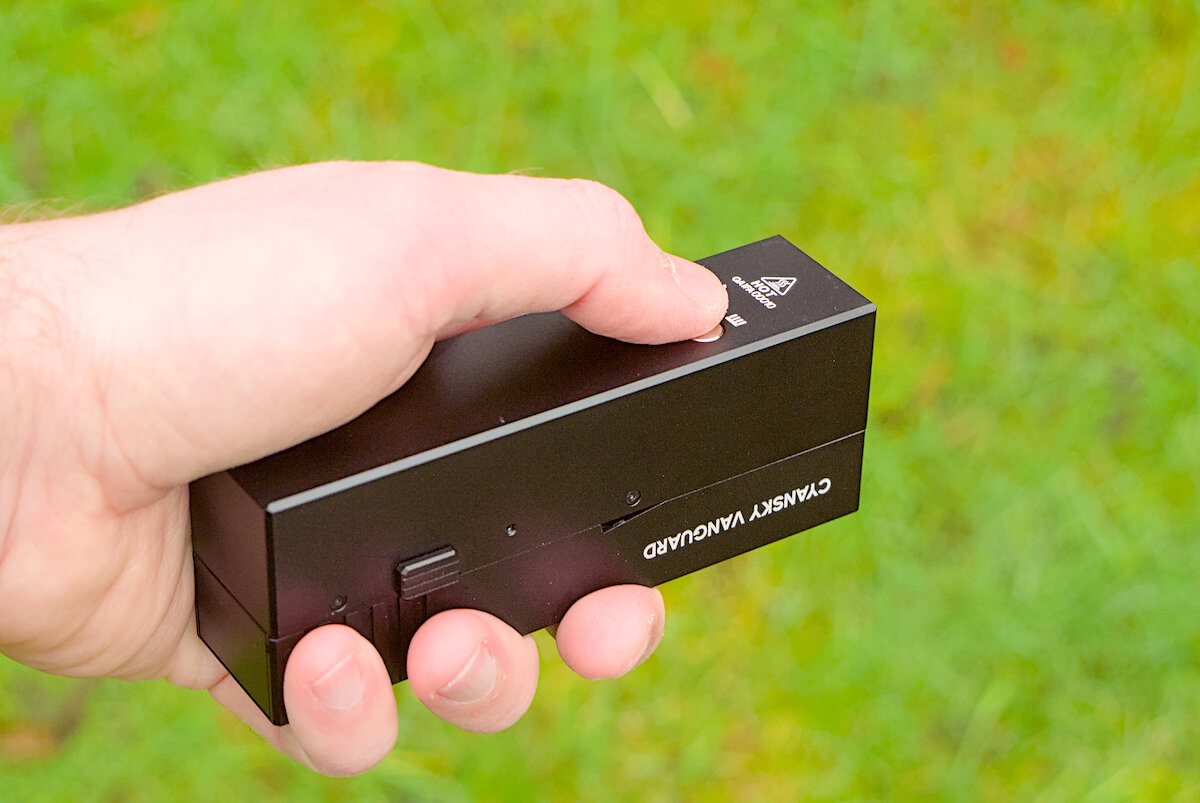
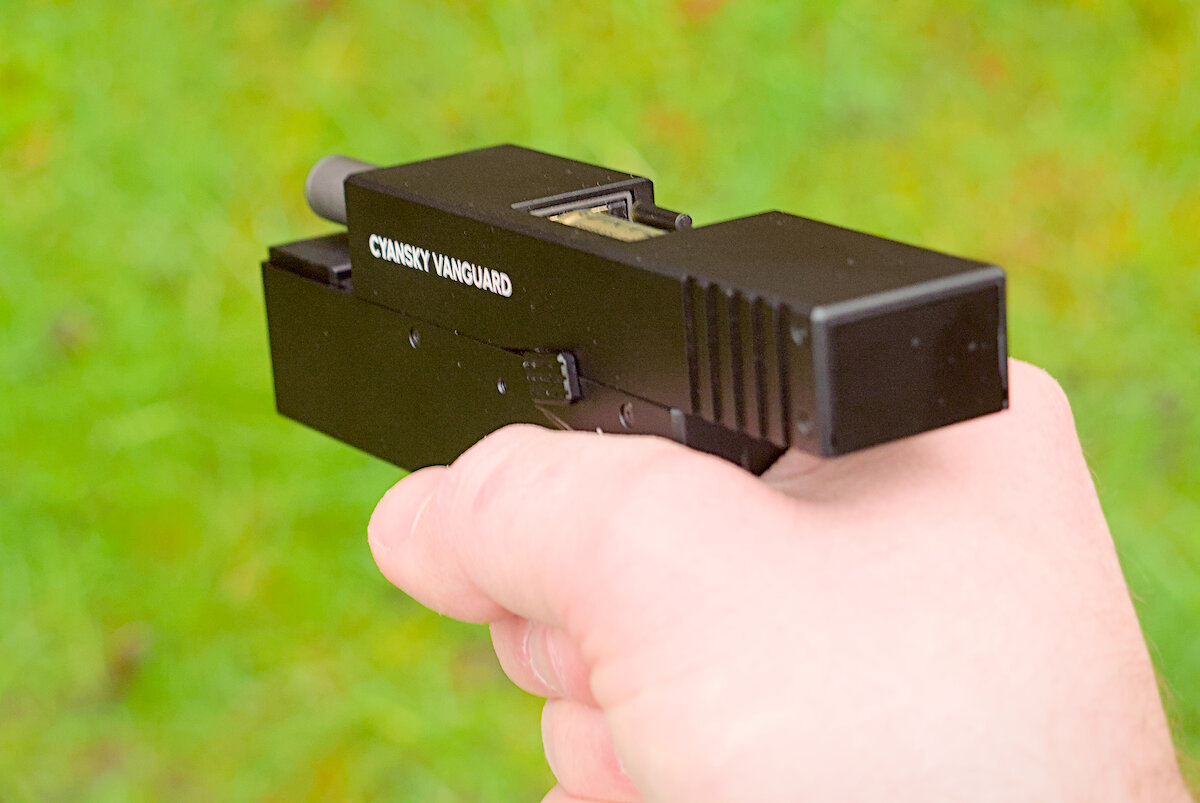
Illumination
Cyansky is keeping quiet about the manufacturer of the built-in LED. It is strikingly similar (apart from the size) to an LED that is used in the Mateminco MT70 MINI-S. But even there the manufacturer is unknown.
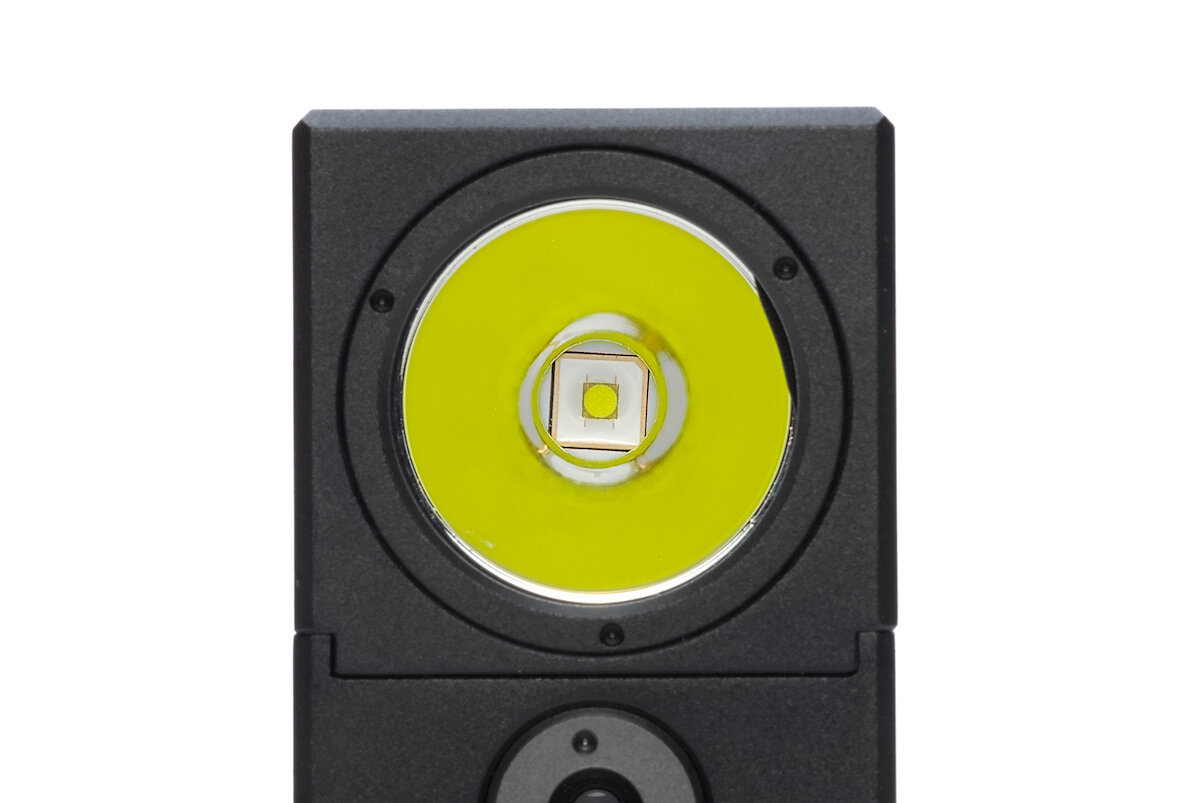
The small, round light emitting surface of the LED is easy to focus, making it ideal for a thrower. It is located in a large reflector, which exploits its full potential, but also creates some weak rings (not visible in the photo).

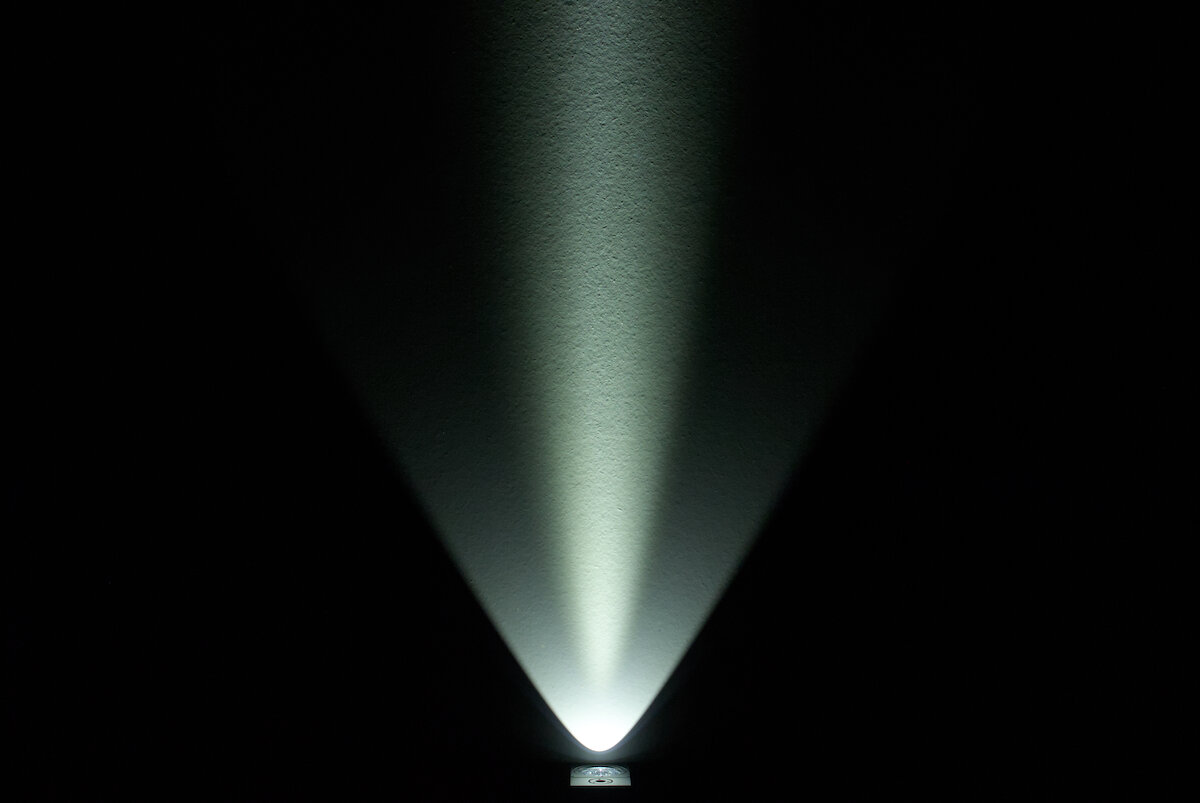
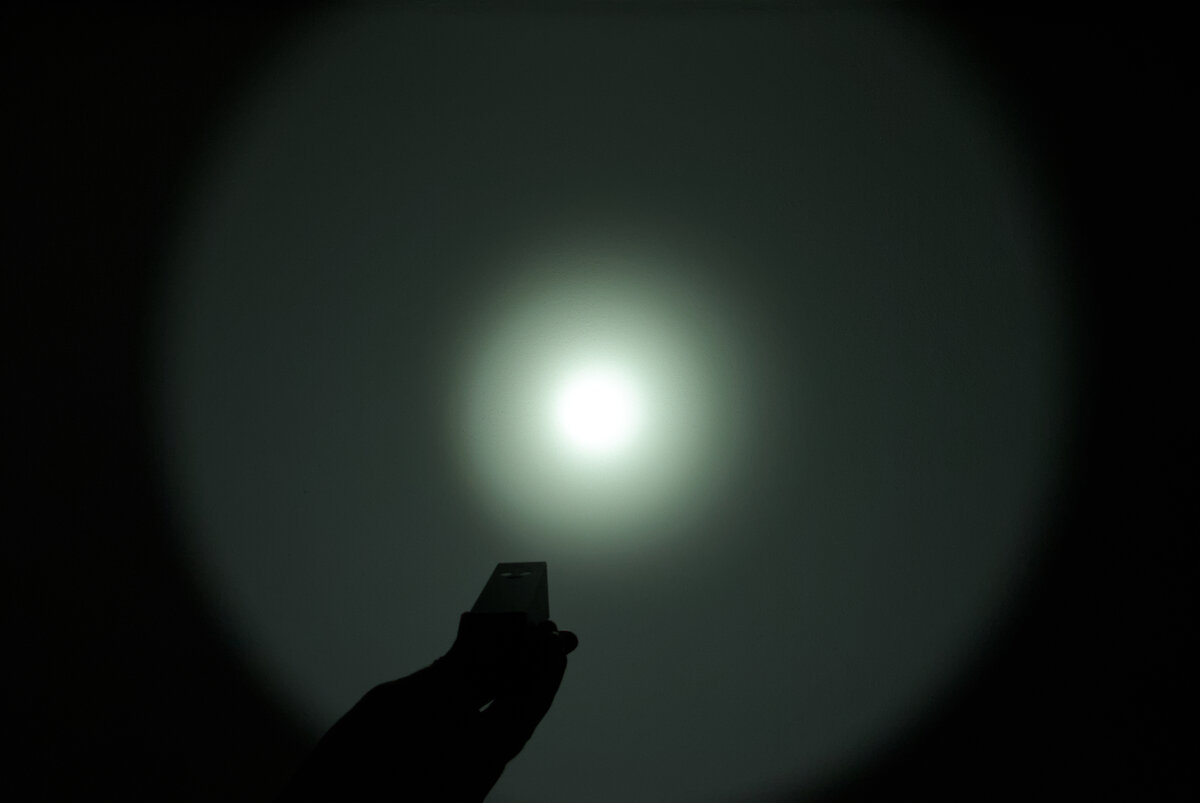
A narrow spot with a wide corona, decent throw, but not really suitable for close range. However, the green tint of the neutral to cool white LED with a low CRI is very prominent.


Driver and runtime
Cyansky does not provide any specific information on the driver used. However, from the control behavior (decreasing brightness towards the end in Turbo, constant brightness below) and measurements with the oscilloscope (slight ripple at 200 kHz), I assume that it is a buck driver.
| Mode | Brightness¹ | Runtime¹ | Intensity¹ (Throw²) |
|---|---|---|---|
| Turbo | 1500 lm | 2.5 h | 42 025 cd (410 m) |
| High | 500 lm | 4.5 h | 15 625 cd (250 m) |
| Med | 150 lm | 16 h | 4 900 cd (140 m) |
| Low | 30 lm | 70 h | 1 056 cd (65 m) |
| Eco | 5 lm | 310 h | 100 cd (20 m) |
¹ According to manufacturer ² ANSI FL1
My measurements were done without the additional battery. According to the instructions, it is only discharged when the built-in main battery is empty. It is therefore more of a backup, which ultimately allows for a longer runtime with limited maximum brightness.


In Turbo the brightness is reduced after three to four minutes, depending on the cooling. At this point, the flashlight has warmed up to around 50 °C. This temperature is then kept fairly constant.


All levels are regulated by the constant current driver without PWM. I was unable to measure the power consumption due to the permanently installed battery. There is protection against deep discharge, as the flashlight turns off at some point.
Conclusion
How does someone come up with such an idea? The Cyansky Vanguard is a great toy for flashlight enthusiasts and gun lovers – definitely a flashlight with a high fun factor. What makes it so special? Its unique design, which is slightly reminiscent of a Glock and that it is loaded with a “9 × 19 mm” battery after the slide has been pulled back. Crazy!
As a flashlight, it is a pretty decent thrower. The beam shape is perfectly fine, but it has a strong green tint. The (matching) green laser is a nice extra. After all, you need something to shoot with, right? When it comes to the buttons, design comes before ease of use.
Got curious? You can preorder the Cyansky Vanguard now here on Kickstarter.